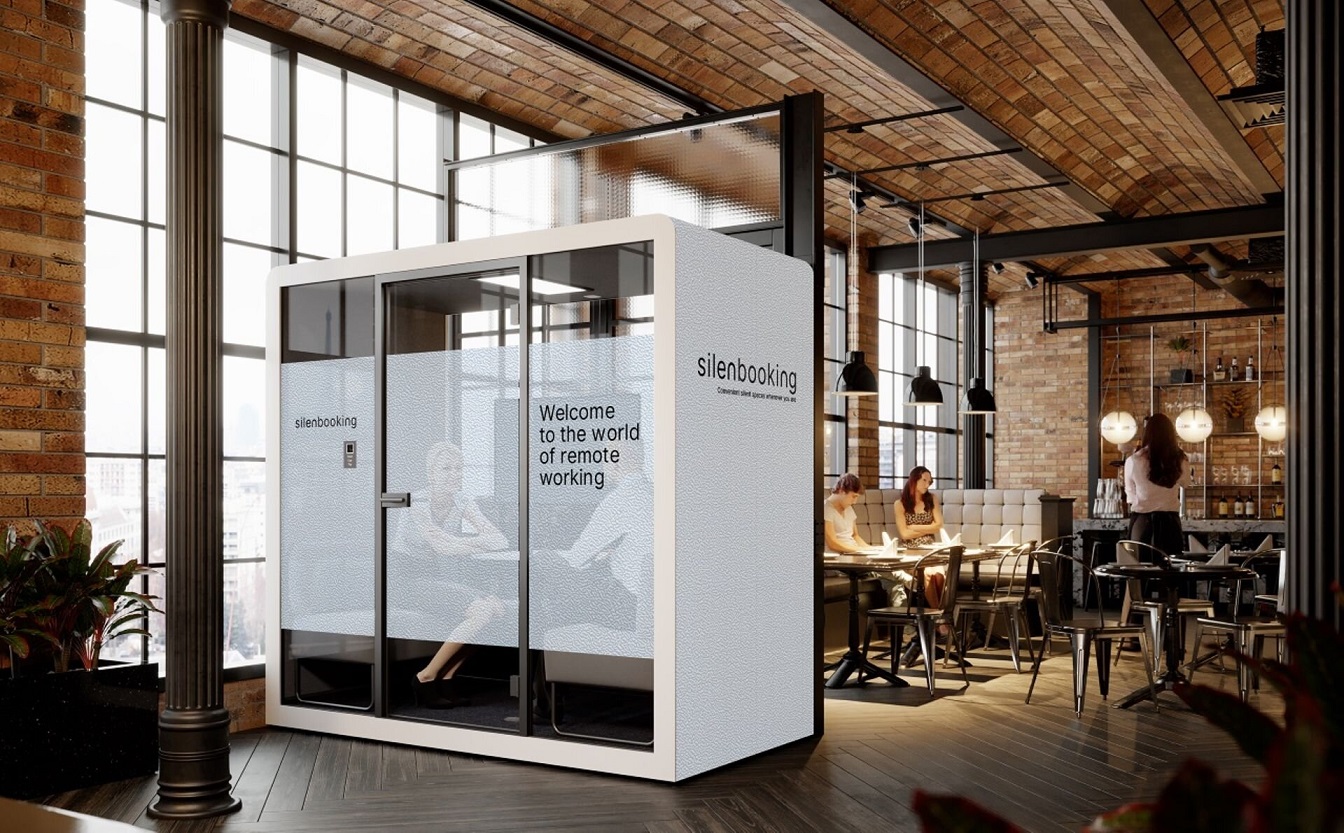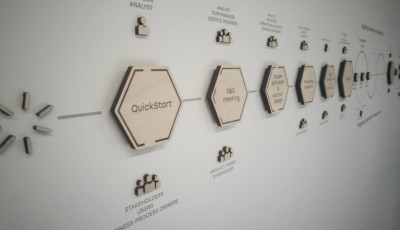Imagine your team has an innovative idea for a spin-off product that you would like to explore further. The only problem is that you don’t yet have any users to ask for feedback or even competitors to check out. How should you draw up a development roadmap that will support the product rollout and accommodate enough flexibility in the process?
Helmes has helped several well-known companies to launch successful spin-off projects and conquer new markets. We recently collaborated with Silen, the Estonian manufacturer of popular office pods and phone booths, to launch a workstation rental service for the general public. You can currently use the Silenbooking service in select cafés in Tallinn, with more locations in Estonia and other countries becoming available in the future.
For us, the ongoing collaboration provided an excellent opportunity to reflect on our methods and distill critical takeaways for the future. Here’s a short overview of our approach to building products for a market that doesn’t yet exist, divided into three steps. Let’s have a look at each of the steps in turn.
1. Defining the minimum viable product (MVP) scope
You are likely to draft the MVP scope before selecting a development partner, then refine and finalize it together after the contract has been signed.
The vital thing in this stage is to keep the MVP as lean as possible, reducing it to functionalities definitely needed to launch the product and leave everything else for the future. In an ideal world, you can test a clickable prototype with real users to save a lot of valuable development time later on.
A good development partner can help you make the often tough choices involved in the process. For instance, in Silenbooking’s case, the MVP was a web module that allowed users to search and book workstations.
Read also about Helmes Quick Start method for analyzing project ideas and defining project scope.
2. Creating a roadmap for the post-MVP stage
After successfully launching the MVP comes the hard part of deciding which of the countless possible directions you should follow next. With limited customer feedback to base decisions on yet, where should you direct resources for maximum impact?
Here’s how we tackled the challenge with Silenbooking.
Even though the service did not yet have customers, we ran user tests with people who could potentially use the service. Testing with real people (preferably real users) should always have a high emphasis when prioritizing development.
In addition, we jotted down all the ideas that came up in the MVP development phase. All in all, this gave us a list of more than 100 features and tasks we could potentially implement.
We then segmented our list into 10 thematic categories, such as sales, new services, new country, special features, etc. After that, we asked the client to pick the top 1-2 tasks in each category that they would select to implement above all others if they had to choose. The goal here is to simplify prioritization; ranking 10 tasks requires a lot more effort than picking a single most important job to get done.
As a result, we stripped down the 100+ list of items to less than 20 tasks. We then assigned a “T-shirt size” estimate (classifying the tasks as a small, medium, or a large amount of work) and calculated their earliest relevancy date and milestones.
The earliest relevancy date refers to when the functionality becomes necessary (for example, a month before adding a new country or product category). Milestones could be information from usage data, user feedback, user testing, or business objectives to validate the task. Essentially, a milestone could be pictured as a command: “Execute X once Y happens.” For example, “Add reoccurring reservation option when at least 20% of interviewed users wish for it.”, or “Add a discount code feature if requested by five users.”
Going through these steps yielded a neat pivot table that we can play around with and use as our roadmap for the months ahead.
3. Adjusting the roadmap on the way
While the previous step makes defining development priorities in the post-MVP stage relatively straightforward, the work doesn’t stop there. Sooner or later, you will need to adjust the roadmap as customers request new features or new business opportunities get spotted along the way. Never stop testing and asking your users for feedback, then act upon it to improve the product.
We’re used to an agile workflow in our team and don’t mind if priorities occasionally change along the road. (In fact, I secretly suspect we even like the challenge it entails)
However, such flexibility requires one thing ‒ always staying in sync about the tasks ahead.
Our team ensures it by having, at a minimum, a weekly sync meeting with the client, enabling us to react fast if life happens and priorities change. We’d also recommend involving our analyst in your in-house product development meetings. That way, the analyst can provide immediate feedback to ideas generated within your team and ensure they are relevant and feasible within the project scope. Eventually, they can relay the information to other colleagues with no delay.
In short, while making changes on the road may feel intimidating, there are cost-efficient ways to ensure everyone stays on the same page and planned changes are feasible within the agreed budget and time frame.
Helmes ‒ more than software development
Spinning off successful projects in your company will require multiple skills and competencies and as many hands on deck as possible. When an IT company becomes your partner, their team becomes your team. Use the opportunity to tap into their expertise beyond the technical know-how and turn it to your advantage.
For example, our team’s diverse experience and backgrounds have allowed us to contribute insights into product decisions ranging from pricing to design and user insights to marketing.
Do you have an innovative business idea inside your business waiting to be unleashed into the world? We would like to hear about it!
Helmes has been developing custom software for customers all over Europe for more than 30 years. Our clients include fast-growing startups, multinational companies in the telecom, fintech, logistics, healthcare, and other sectors and public institutions.
READ ALSO: Guide to Choosing a Nearshore Software Development Team
Let’s get to work
For a fruitful conversation about creating or improving business software, contact any of our people or drop us a line at info@helmes.com.



